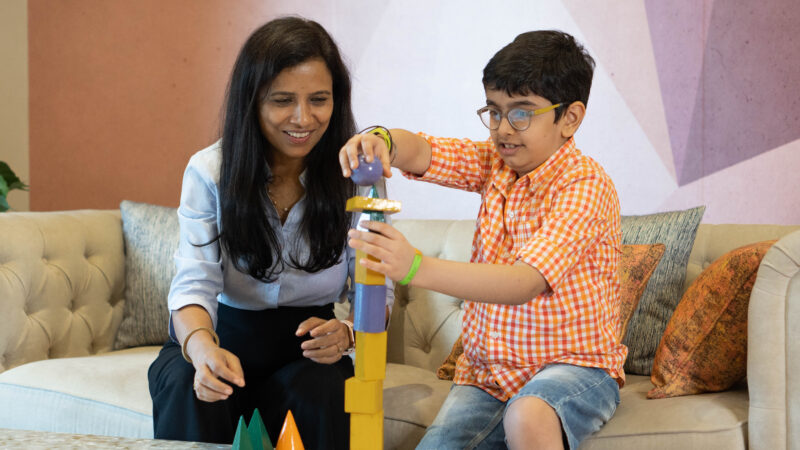चंदा है तू मेरा सूरज है तू, ओ मेरी आँखों का तारा है तू | Come to think of it, this song is our Indian version of shapes song. When my son was small. Most days I used to sing him this लोरी with the hope that he sleeps with the least effort haha! (all the toddler parents would relate haha). This song meant two things to me, “You have no idea how much I love you, my child”. The second was to make him aware of basic shapes (because Indian mothers have a compulsive need to teach..hahaha). The song was an opportunity to talk about shapes of all kinds (2D and 3D).
As he grew up, our conversations turned to more complicated shapes like Diamond, cones, spheres, pyramids etc.
Let’s take a visit down memory lane and explain the concept to your children.
What are 3D Shapes?
We will discuss basic 3D shapes, to begin with. Let’s first understand the term 3D.
3D shapes mean three-dimensional shapes. In simple words, you can pick/hold 3D shapes.
Whereas 2D shapes can’t be held, you can’t pick 2D shapes. They can be just drawn on paper.
My favourite example is a round shape. When you draw it on a piece of paper, it looks like this.

This is called a circle. A circle is a 2D shape.
Now when you see this
It’s not a circle anymore. It may look like a circle.
What is it then?
For now, let’s say it’s a 3D shape. You can hold this in your hand.
Let’s start with some special kinds of 3D shapes.
- Sphere
- Cone
- Cylinder
- Cube
- Cuboid
- Pyramid
- Prism
Watch this video to understand 2d and 3D shapes better
Moving on to the next important thing to understand when learning about 3D shapes.
What are Edges and how to count them?
Edge of a 3D shape is the line that joins one corner to the other.
We have made this reference sheet for parents and children.
Keep this handy for quick recap while teaching your child.







Download FREE Printable
Watch this video for better understanding of Edges, Faces and Vertices
What are Pyramids and Prisms?
Remember
- A Triangular Pyramid has 4 vertices.
- A Square/Rectangular Pyramid has 5 vertices .
- A Pentagon Pyramid has 6 vertices.
- A Hexagon Pyramid has 7 vertices and so on. (The pattern remains the same)
- Number of edges in a Pyramid and Prism will depend upon the shape of its base.
- Number of vertices in a Pyramid and Prism depend upon the shape of its base.
- A Triangular Prism has 6 vertices .
- A Square/Rectangular Pyramid has 8 vertices.
- A Pentagon Pyramid has 10 vertices.
- A Hexagon Pyramid has 12 vertices and so on. (The pattern remains the same)
- Number of faces in a Pyramid will depend upon the shape of its base.
- A Triangular Pyramid has 4 faces.
- A Square/Rectangular Pyramid has 5 faces.
- A Pentagon Pyramid has 6 faces.
- A Hexagon Pyramid has 7 faces and so on. (The pattern remains the same)
- Number of vertices in a Prism will depend upon the shape of its base.
- A Triangular Prism has 5 faces.
- A Square/Rectangular Pyramid has 6 faces.
- A Pentagon Pyramid has 7 faces.
- A Hexagon Pyramid has 8 faces and so on. (The pattern remains the same)


Get loads of practice with our Lines and Shapes workbook
If you want us to explain any other topic. Let us know in the comments below.

